Sea otters are furry, fluffy, and fuzzy marine mammals with button-like noses, expressive mouths, and round eyes that look like polished black marbles. Their inquisitive gaze makes them look perennially curious, and they act most adorably, too, holding each other’s paws, rubbing their faces clean, and bashing shells loose and open with rocks.
They’re definitely considered as one of the cutest mammals in the sea - and it’s easy to see why! Read on to find out where sea otters live, why sea otters hold hands, and why they behave the way they do. Learn the answers to questions like “What do sea otters eat?”, “How do sea otters sleep?” and “Are sea otters endangered?”.
A welcome note from Charlotte Amy Raven
Originally from the South of England, Charlotte Amy Raven studied at the University of Chester. With over 10 years of experience as a marine mammal trainer, she has been with SeaWorld Yas Island, Abu Dhabi since 2021 as a member of the pre-opening team. Initially starting in the sea lion department, Charlotte Amy Raven has since transitioned to the Arctic department.
The habitat of sea otters: Where sea otters live?
Sea otters live in near-shore waters of the North Pacific Ocean, which spans the North Pacific rim from Hokkaido, Japan to Baja, California. Since the North Pacific Ocean borders the Arctic Ocean, sea otters live in frigid water that ranges between 35 and 60 degrees Fahrenheit (i.e., between two and 16 degrees Celsius).
Northern sea otters inhabit the coastal waters of Alaska and Washington. You’ll find western sea otters along the coast of Japan and the Russian far east, thus, their other common name, Russian sea otters. Meanwhile, southern sea otters live in the near-shore waters of Central California; thus, they’re also known as California sea otters.
Factors influencing habitat
Sea otters live in, among or near sea kelp forests because this is where they get most of their food. They have a higher metabolism and that requires them to consume around 25-40% of their body weight every day. Therefore, they stay in coastal sea kelp forests where prey is abundant.
Kelp forests also serve as a protective cover against predators. You may be wondering which animals prey on Sea Otters – who are their predators? Sharks, killer whales and sea lions prey on sea otters.
Kelp helps secure sea otters at rest. How do sea otters sleep? They wrap themselves (and their pups) in kelp to prevent them from drifting with the current.
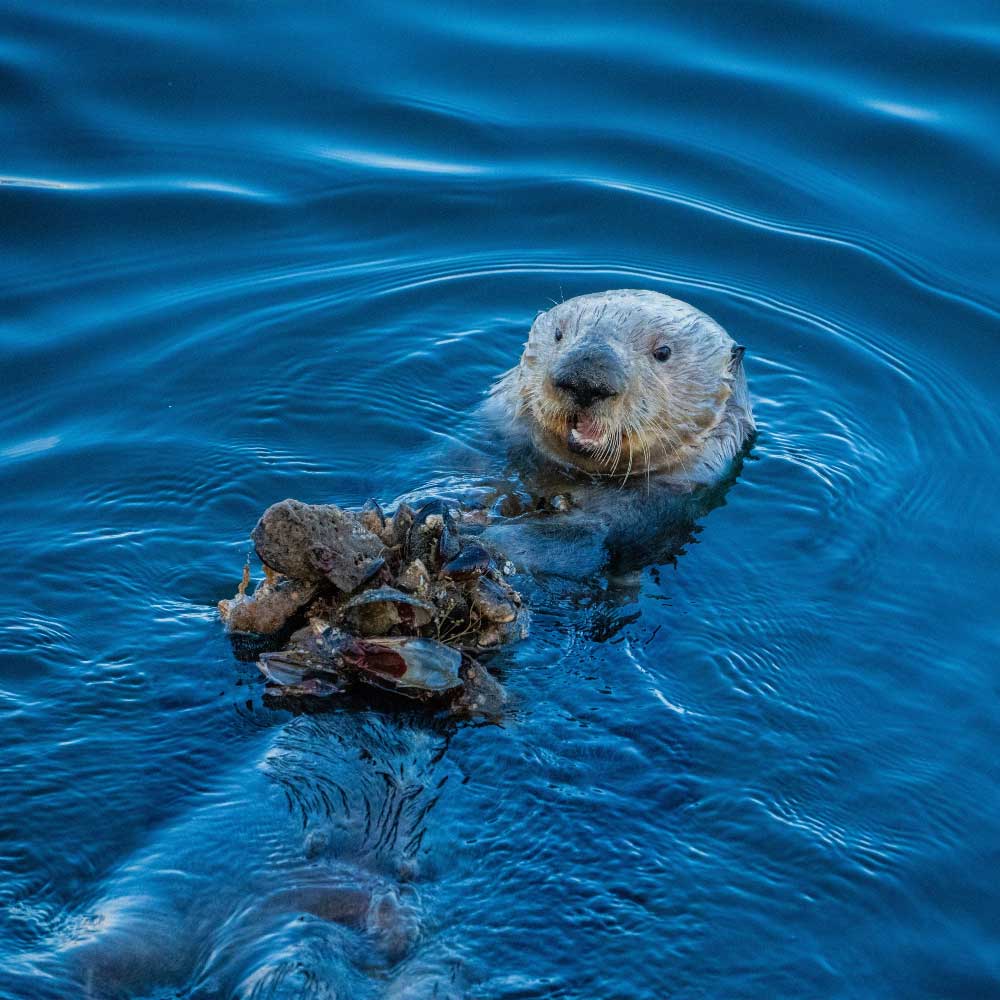
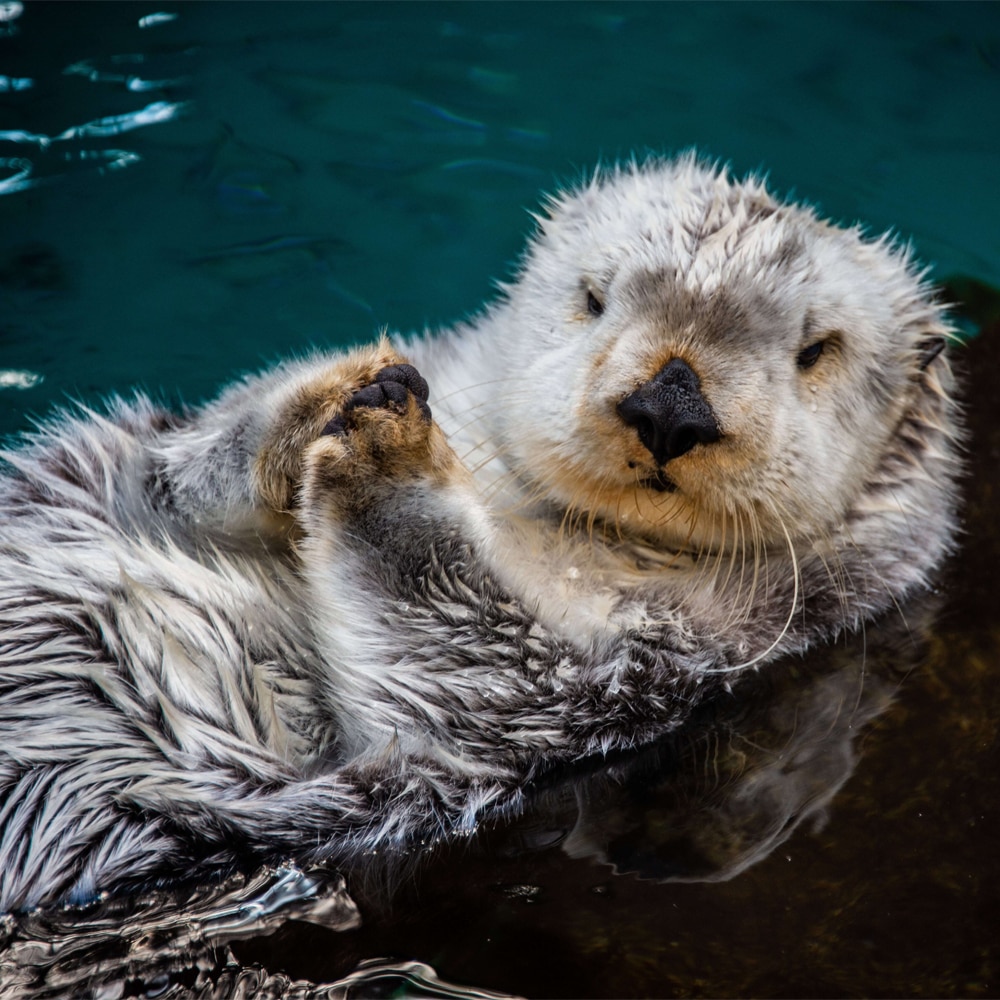
Scientific facts about sea otters
Sea otters are a species of dog-like (Caniformia) carnivorous mammals under the otter subfamily (Lutrinae) of the Mustelidae family. As mustelids, they are relatives of weasels, stoats, martens, and badgers.
- Kingdom: Animalia
- Phylum: Chordata
- Subphylum: Vertebrata
- Class: Mammalia
- Subclass: Theria
- Infraclass: Eutheria
- Order: Carnivora
- Suborder: Caniformia
- Family: Mustelidae
- Subfamily: Lutrinae
- Genus: Enhydra
- Species: Enhydra lutris
- Subspecies: Enhydra lutris kenyoni (northern sea otters), Enhydra lutris lutris (western sea otters), and Enhydra lutris nereis (southern sea otters)
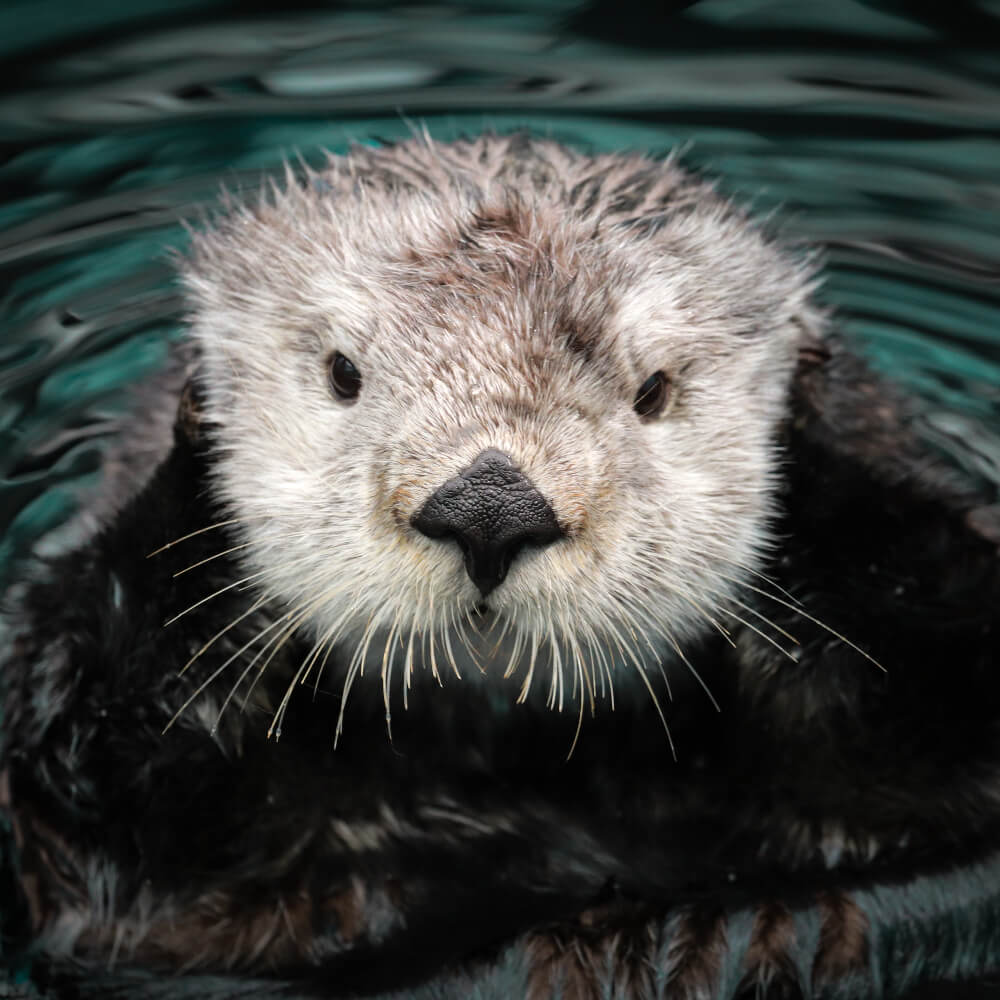

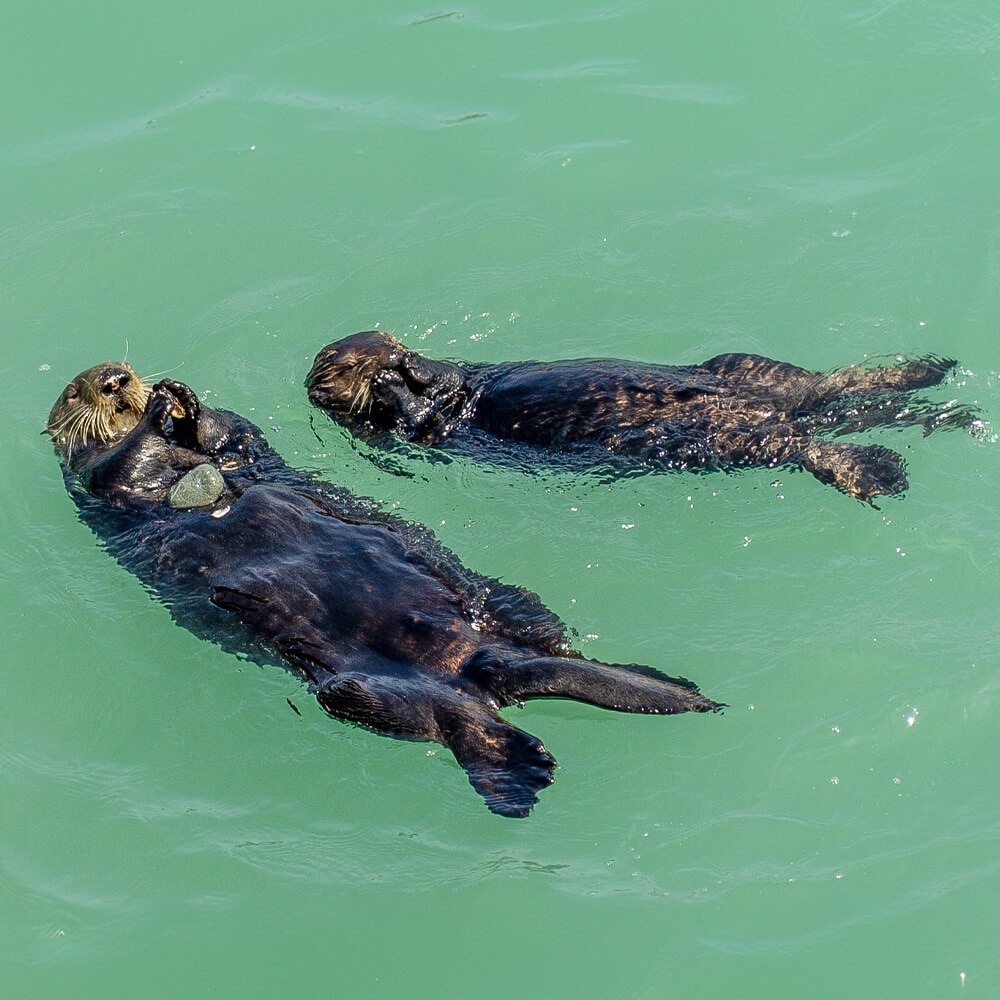
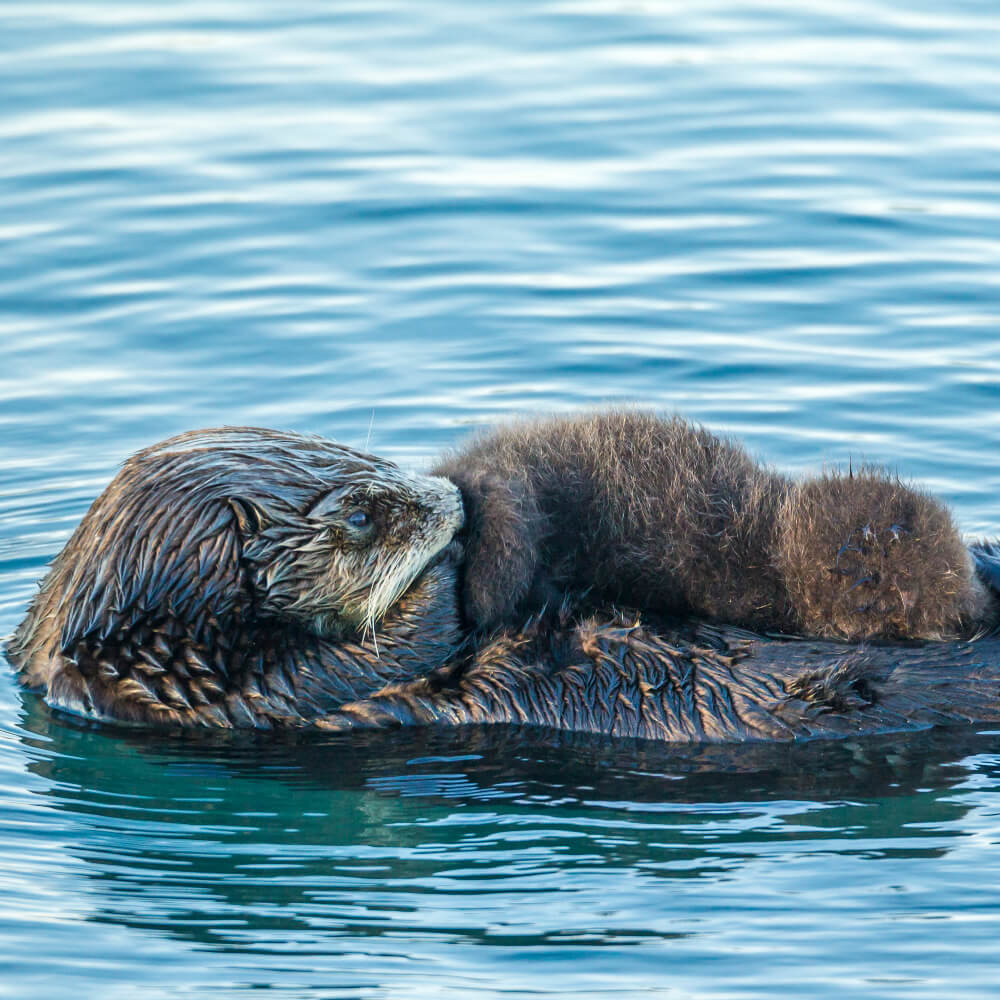
River Otters vs Sea Otters
There are 13 existing otter species. All are semi-aquatic or aquatic, but the sea otter is one of the two that inhabit strictly marine environments.
What do sea otters eat?
They eat slow-moving marine invertebrates that live on or under the coastal seafloor. Examples include sea urchins, sea cucumbers, sea stars, sea snails, crabs, mussels, and mollusks (e.g., clams, abalone, oysters). Northern sea otters also feed on fish.
Hunting methods
Sea otters usually forage at depths between 2 and 30 meters but can dive up to 100 m underwater. Foraging trips can take several hours, each one a series of dives with a few minutes break in between - where they come up to the surface to breathe.
Sea otters use their eyes and vibrissae to detect prey and their forepaws to catch and hold shellfish, dig under the sea floor, and flip boulders on the seabed. They’re some of the very few mammals known to use “tools”. ” You’ll often see them swimming on their backs, bashing clams against a crab pressed to their chest, or pounding a piece of rock against a stubbornly attached rock-clinging mollusk.
Sea otters: Characteristics at a glance
How big are sea otters?
Sea otters are typically 1.2 m long but can grow up to 1.5 m. Males weigh approximately 29 kg, and females 20 kg, but have been recorded to weigh up to 45 kg.
What color are sea otters?
Sea otters have brown coats in various shades, but some are blonde or silver. The fur on their faces can turn progressively lighter with age.
How often do sea otters feed?
Sea otters forage for food every three to four hours.
Why do sea otters pups lie on their mother’s stomach?
A female sea otter carries her pup on her belly and spends a great deal of time grooming it for the first three months. Sea otter pups may begin to swim and take solid food at about four weeks, and dive at six weeks. Pups remain dependent on their mothers for an average of six months.
How do sea otters sleep?
Sea otters often rest together on the water surface in groups called rafts. Sea Otters sometimes hold each other’s paws while resting to keep their paws warm and to keep them from drifting to the open ocean. When diving for food, Sea Otters often wrap their pups in strands of kelp to keep them from drifting.
Are sea otters amphibious?
Sea otters are less comfortable on land, and spend the majority of their lives in the water. They hunt, feed, sleep, and give birth in the water.
Why are sea otters unique?
The following things make sea otters special:
- They keep the sea urchin population under control. By doing that, they help kelp forests thrive. Sea urchins are herbivores that graze on kelp.
- They have the densest fur among all animals, with an estimated one million hairs per 6.45 square centimeters.
- They are one of the smallest marine mammals.
- They are the biggest mustelid or member of the Mustelidae family.
- They use rocks as tools.
- They flip boulders to find hidden food.
- They catch prey with their hands, not their mouths.
- They can sleep while floating serenely on the water’s surface.
- They have flaps of fur below their “armpits.” They use this loose skin as “pockets” to store and carry food and tools (e.g., their favorite piece of rock for opening shells).
Are sea otters endangered?
Yes. The International Union for Conservation of Nature (IUCN) has included sea otters in the Red List of Threatened Species as “Endangered”. Pollution is a threat, particularly run-off chemicals and disease-causing organisms that contaminate their food and make them ill. Meanwhile, oil spills impair their fur’s ability to keep them dry and warm, exposing sea otters to the risk of death from hypothermia.
Are sea otters friendly?
Sea otters look adorable and friendly, and energetic and playful, but like all predatory animals, they need to be treated with caution. Their sharp teeth and powerful bite can make them dangerous, so it’s best to interact with them under supervised conditions.
Sea otters’ adaptations
Sea otters are well-adapted for their environment and way of life. The following are some adaptations that enhance their chances of survival.
Adaptation to cold water
Sea otters live in cold water but unlike other marine mammals, do not have a layer of fat or blubber. Instead, they have two layers of dense fur, which not only keeps them warm, but the outer layer is also impervious to water. This two-layer system traps air close to the skin, keeps the skin dry and provides warmth (i.e., a body temperature of 100 °F or 37.8 °C).
Their agile forepaws enable sea otters to rub their faces and comb their fur with force and precision. Sea otters spend a significant portion of their day grooming and cleaning their fur to maintain its thermal insulation properties.
Adaptation for marine living
These characteristics help sea otters thrive in marine environments:
- Nostrils and ears that close when submerged in water
- Long, broad, flat, webbed feet that look like flippers for efficient propulsion
- The long fifth digit (the longest) on the hind limbs for effortless swimming on their backs
- Muscular body for swimming and steering
- Buoyancy from the trapped air between their coats and a large lung capacity for floating
Adaptation for hunting
Sea otters are efficient hunters due to the following traits:
- Agile forepaws (with claws they can retract) for twisting and pulling with great force
- Four incisors on the lower jaw for cracking shells
- Palms with tough pads for grip
- Loose skin “Pockets” under the forearms for carrying food and tools
- Rounded and flattened molars for crushing food
- Good eyesight (both in land and water) and a keen sense of smell and hearing
- Vibrissae to sense vibrations in the water
- The ability to hold their breath for up to five minutes
- Their buoyancy to carry heavy objects to the surface
Meet sea otters in real life at Sea World Yas Island, Abu Dhabi
Visit us at SeaWorld Yas Island and observe our sea otters at the Arctic Realm or book an opportunity to interact with them during a Sea Otter Encounter. You can also explore the rest of our one-of-a-kind animal habitats at Sea World Yas Island, Abu Dhabi.
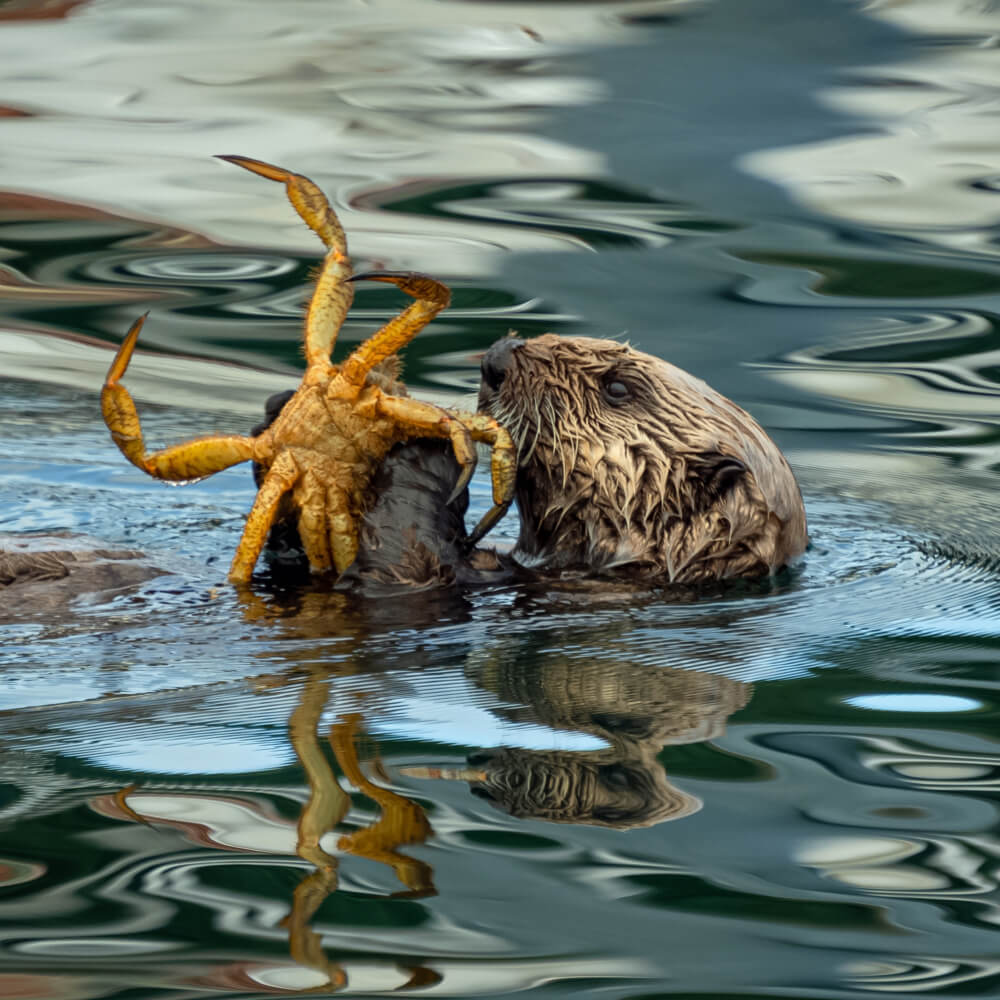

Did you like reading our story?
If you enjoyed or learned something from this story, sign up for our newsletter and be among the first to know when a new story comes up! Please enter your email below.



